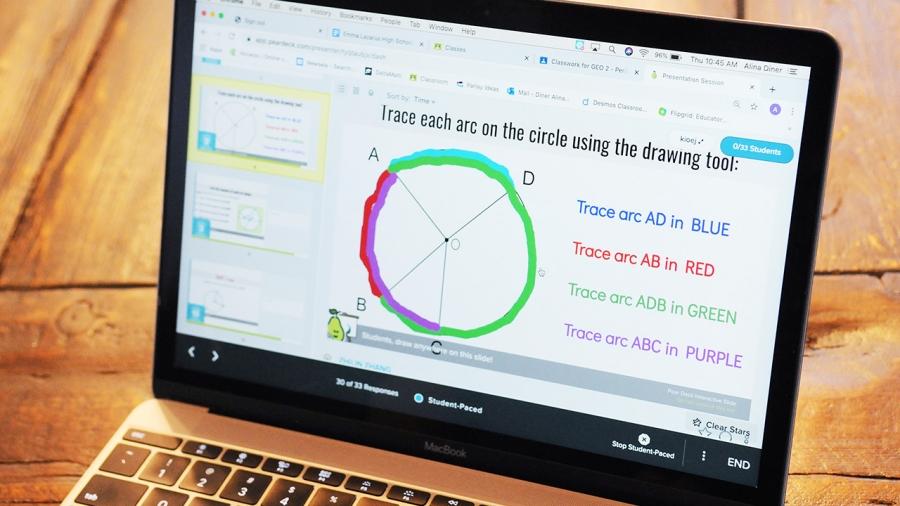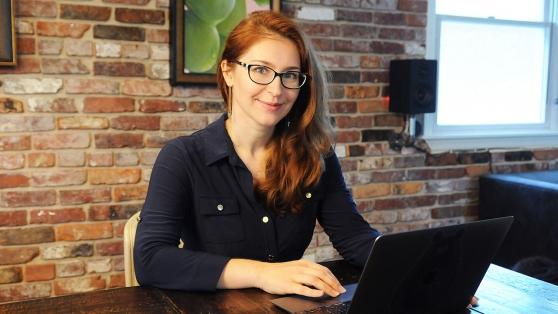I spoke with a range of teachers and coaches across the city to hear their experiences working with Google Classroom, the platform that most teachers used for remote learning this spring. Common themes emerged: the platform’s potential to foster collaboration with colleagues and communication with families and the challenge of striking the right balance between consistency and flexibility.
Alina Diner, a math teacher at Emma Lazarus HS in Manhattan, spoke of the need for organization, repetition and consistency in her Google Classroom for her English language learners. The teachers at Emma Lazarus agreed on a common format for assignments, delivered via Google Slides, so that students “know exactly where to go and where to look for what they need to do,” said Diner. She said she also standardized when assignments were given and what time they were due, both for the sake of familiarity and to set expectations for this new way of learning right from the start.
Remote instruction for young students poses many challenges. Stacey Valentino, a 1st-grade teacher at PS 42 on Staten Island, said it took collaboration and communication among colleagues, parents and administration at her school to make Google Classroom work. Valentino’s grade level team decided to make instruction consistent and uniform, while building in flexibility, such as posting daily read-alouds that students and families could access when it was easiest for them to do so. Google Meets were scheduled in advance but also recorded for students who could not log in live. Administrators scouted the internet for online materials, like raz-kids.com and the Google Classroom curriculum created by Teaching Matters.
Juan Cardona, a social studies teacher at Innovation Diploma Plus HS in Manhattan, a transfer school for students ages 16–21, added multimedia resources such as Kahoot and high-quality videos on YouTube to enliven learning and reach visual learners in his class. He asked his students to look up and synthesize information themselves, which gave them the opportunity to learn hands-on research skills. “With my subject area, Google Classroom is actually a gift to me,” he said.
Caitlin Schein, a special education coordinator and colleague of Cardona’s, said she used Google Forms as her go-to method to scaffold essays for students because it allows sections to be chunked into smaller pieces. Using Google Forms, teachers can create short writing prompts and then students can use those responses to build full essays, which helps demystify the process and make it less intimidating as well.
At PS 22 on Staten Island, Leslie Johnson, a computer science cluster teacher, created “how-to” tutorials for the school’s younger students to help familiarize them with the new platform. For her own classes, Johnson focused on concise assignments, such as using one Google Slide. “Less navigation translates into less confusion,” she said.
Michelle Minnelli, a UFT Teacher Center coach at PS 188 in Brooklyn, said Google Classrooms made it much easier for her to “visit” each classroom to assist teachers.
“I’m readily accessible,” Minnelli said. “I feel like I help more and support more just because we’re in this virtual world.”
Sandy Scragg is an instructional technology specialist with more than 15 years of experience in New York City public schools.

